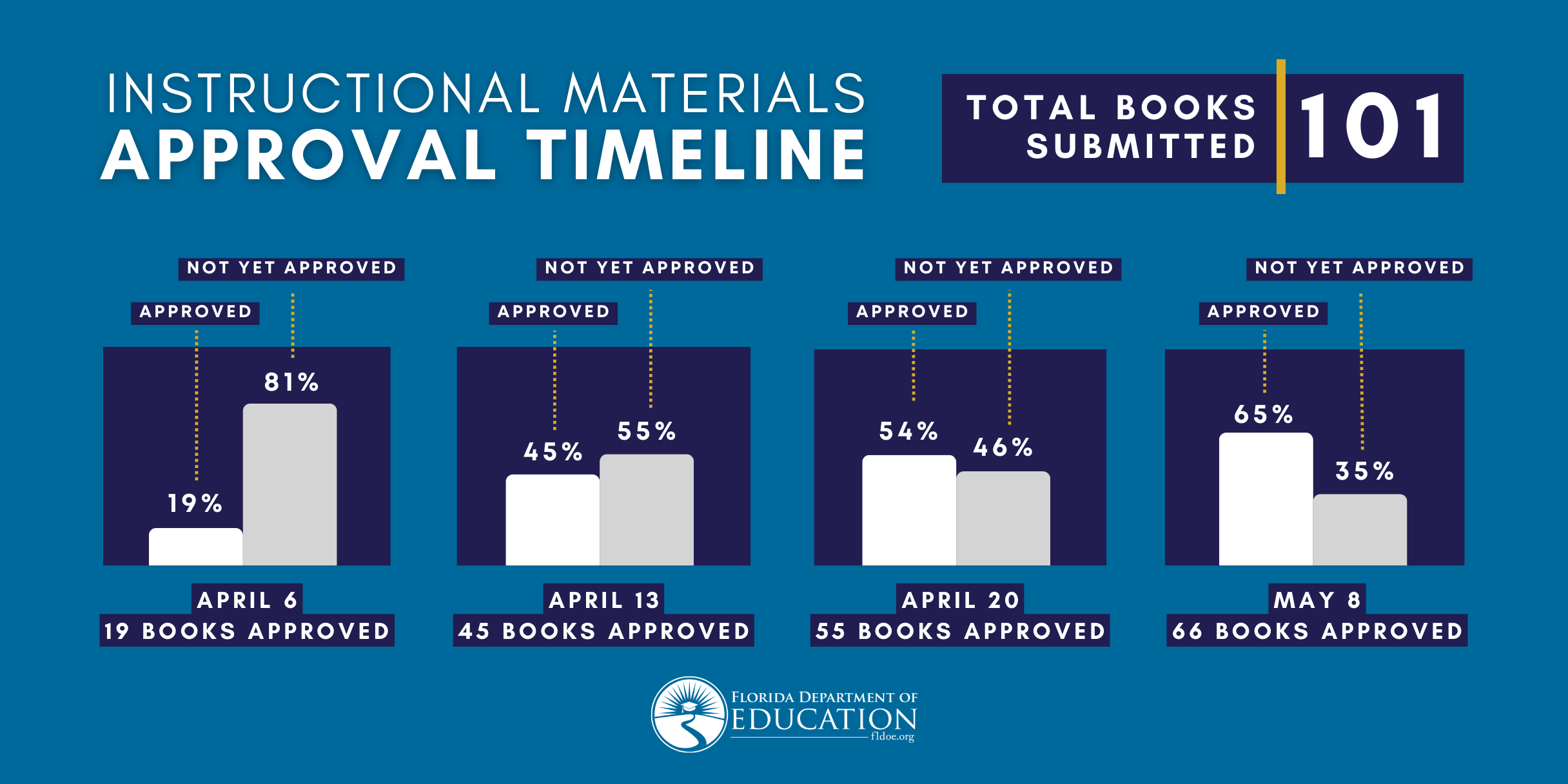2022-2023 K-12 Social Studies Examples of Rejected Materials
Disclaimer:
The Department spent the past month working with publishers to ensure materials are free from errors and aligned to Florida Statutes and State Board of Education Rule, which resulted in a total of 66 textbooks being added to the state adoption list. These textbooks are now available for purchase by school districts across the state.
The following page includes examples of materials that were changed by publishers following an initial review. The Department will continue to work with publishers in an effort to include as many textbooks on the state adoption list as possible. Publishers have the ability to appeal any non-adoption decision. Publishers may submit revisions that subject matter experts will review to ensure that the final materials ultimately meet Florida’s bid specifications and align to Florida’s state academic standards.
- To view the press release, visit: https://www.fldoe.org/newsroom/latest-news/florida-approves-over-60-of-social-studies-instructional-materials-submissions.stml
- 2022-2023 Social Studies Instructional Materials Adoption List - 5/8/23 (PDF)
- 2022-2023 Social Studies Instructional Materials Not Recommended List - 5/8/23 (PDF)

2022-2023 K-12 Social Studies Examples of Rejected Materials
Grades: K-5
Concern: Not age appropriate.
Before:

After:

Grades: 6-8
Concern: Inaccurate description of socialism.
Before:

After:

Grades: 6-8
Concern: Politically charged language when referencing the Hebrew Bible.
Before:

After:

Grades: 9-12
Concern: Implies that real communism does not exist and paints an inaccurate picture of communism.
Before:

After:

Grades: 6-8
Concern: Unsolicited topics.
Before:


After:
Section Removed.